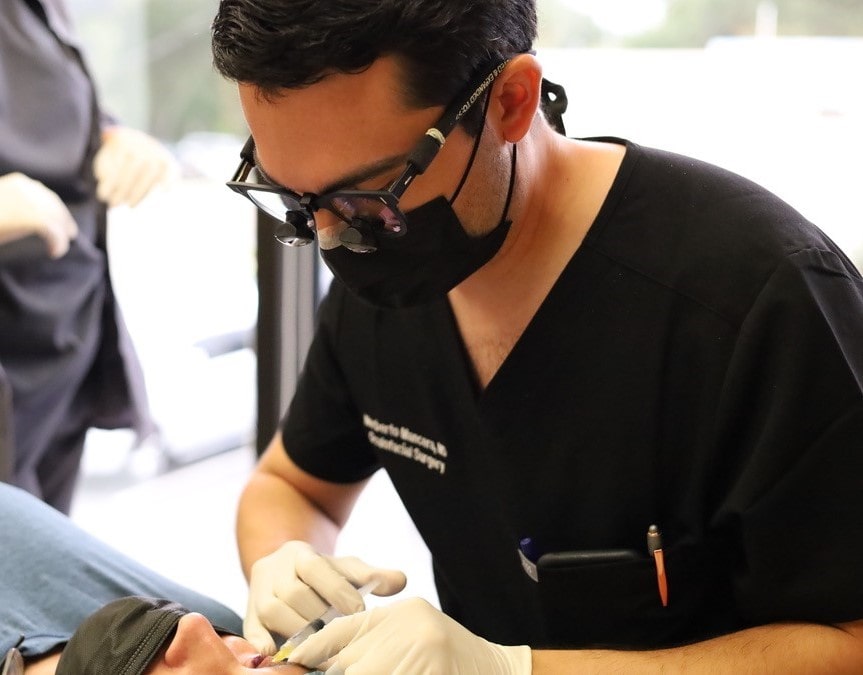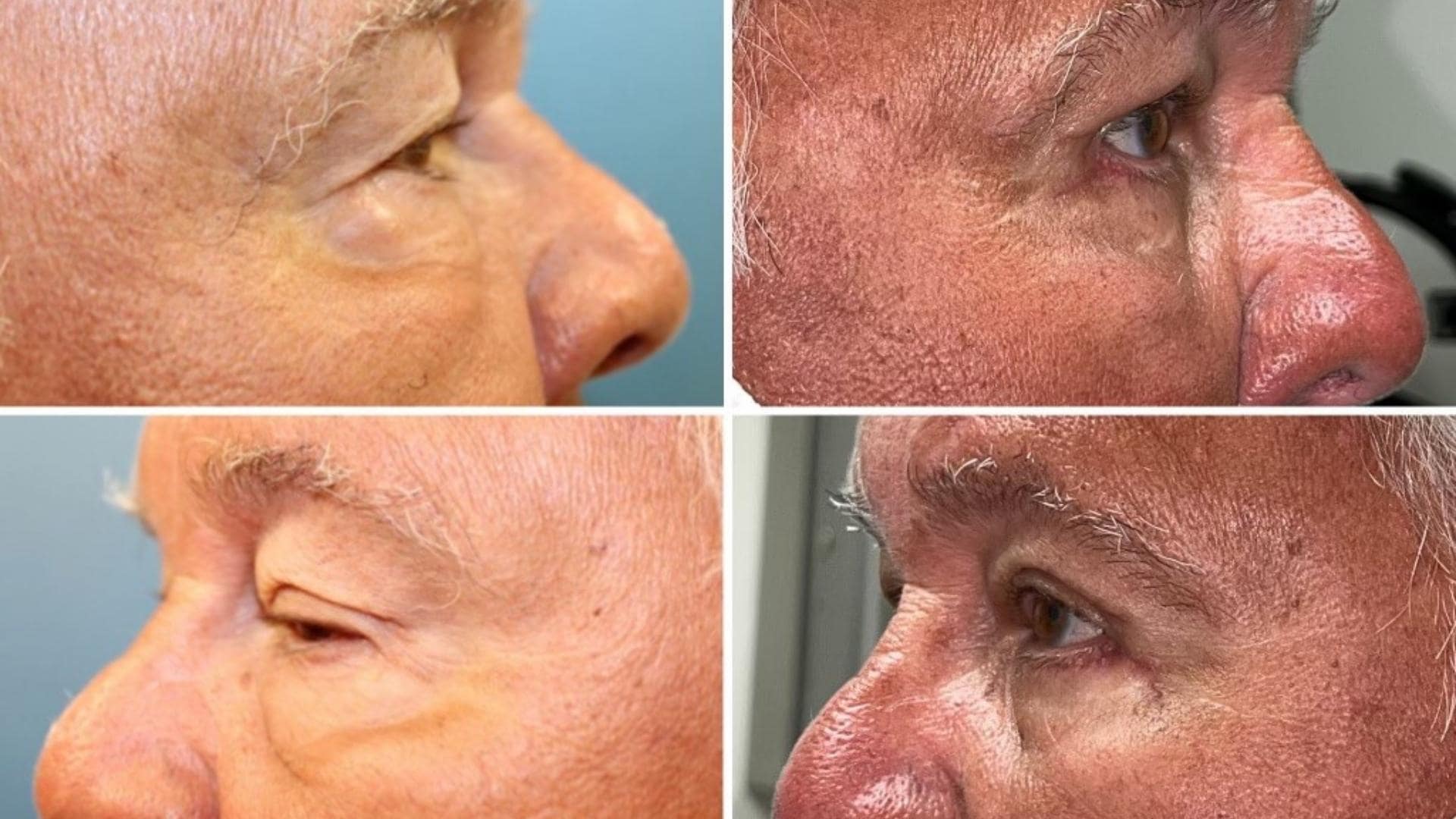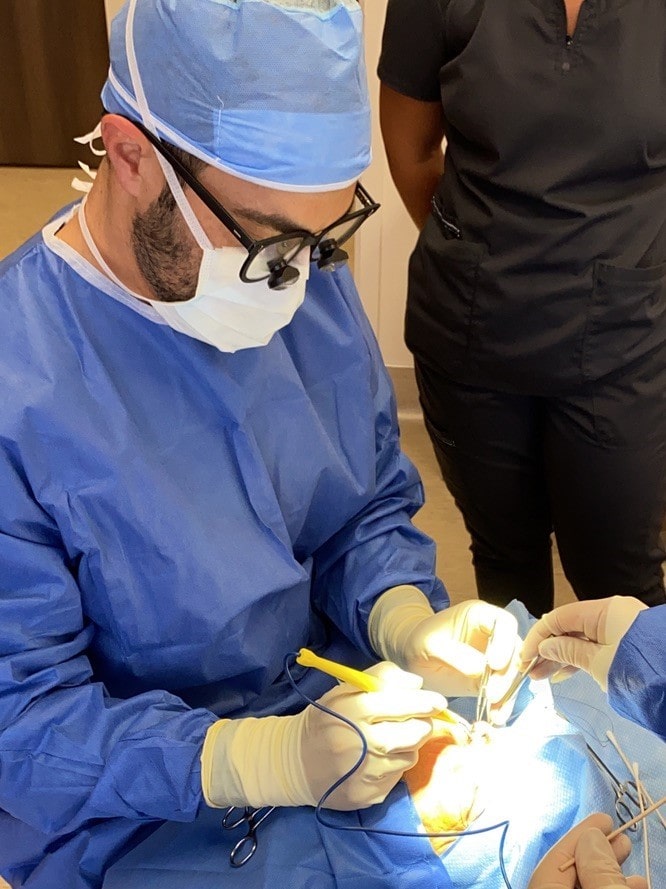Oculoplastics, a specialized field within ophthalmology, encompasses diverse surgical procedures that focus on the structures surrounding the eyes, including the eyelids, eye sockets, tear ducts, and even the facial region. This rapidly evolving field has gained attention, as both patients and medical professionals recognize the profound impact these advanced procedures can have on overall eye health and facial aesthetics.
Functional and Cosmetic Dual Purposes
Oculoplastics serves a dual purpose – addressing both functional and cosmetic needs. Many oculoplastic procedures are undertaken to correct medical issues impacting a patient’s vision, eye health, and overall quality of life. This includes addressing conditions such as drooping eyelids (ptosis), eyelids that turn inward (entropion) or outward (ectropion), obstructed tear ducts, and even specific eye-related effects of thyroid disorders. In contrast, other oculoplastic interventions are sought for aesthetic reasons, such as eyelid rejuvenation, brow lifts, and facial rejuvenation.
Types of Oculoplastic Procedures
The scope of oculoplastic surgery is vast with multiple types of surgeries for various conditions. These procedures can be categorized into three main groups: surgical treatments, non-surgical treatments, and cosmetic treatments.
Some of the most commonly performed procedures include:
Eyelid Surgery:
- Upper and lower eyelid blepharoplasty: Addressing excess skin, fat, and muscle to rejuvenate the eyelids.
- Ptosis repair: Correcting drooping of the upper or lower eyelids.
- Entropion and ectropion repair: Addressing inward or outward-turning eyelids.
Tear Duct Surgery:
- Procedures to unblock or restore proper tear duct function.
- Biopsy or removal of the lacrimal gland.
Orbital Surgery:
- Addressing issues related to the eye socket, such as tumors or trauma.
- Orbital decompression for conditions like Graves’ disease.
Facial Rejuvenation:
- Brow lifts.
- Facelifts (with eyelid and surrounding area involvement).
- Injectables (e.g., Botox, fillers).
Reconstructive Surgery:
- Eyelid reconstruction after cancer or injury.
- Addressing congenital defects or disorders in children.
Getting Started with Oculoplastic Surgery
When patients seek oculoplastic care, the first step is the initial consultation. During this appointment, the oculoplastic surgeon thoroughly examines the patient, evaluates their concerns, and formulates a personalized treatment plan. This individualized approach is essential, as each patient’s anatomy, medical history, and aesthetic goals may vary significantly.
The oculoplastic surgeon will meticulously assess the patient’s ocular structures, including the eyelids, tear ducts, and orbital region. They may use advanced diagnostic tools, such as imaging studies or specialized tests, to gain a complete understanding of the patient’s condition. Once the surgeon has gathered all the information needed, they then determine the most appropriate course of action, whether it be a functional procedure to address a medical issue or a cosmetic intervention to enhance appearance.
Preparing for Oculoplastic Surgery
Before undergoing any oculoplastic procedure, patients will receive special pre-operative instructions from their surgeon. This may include guidance on discontinuing certain medications, avoiding certain activities, and preparing for the surgery. Patients may also be advised to quit smoking and refrain from alcohol consumption for a specified period to optimize healing and minimize the risk of complications.
The surgical setting for oculoplastic procedures can vary. Some are performed in a hospital, while others take place in an outpatient surgical facility or the surgeon’s office. Depending on the complexity of the procedure, the patient may receive local anesthesia, regional anesthesia, or general anesthesia to ensure their comfort and safety during the operation.
Postoperative Care
Following oculoplastic surgery, patients can expect a varied recovery experience, depending on the specific procedure performed. In many cases, patients can return home the same day as the surgery, though they will need to arrange for transportation, as they may not be able to drive immediately after the procedure.
During recovery, patients may experience discomfort, swelling, or bruising around the treated area. The oculoplastic surgeon will provide detailed instructions on managing these side effects, which may include using cold compresses, pain medication, and specific bathing or activity restrictions.
Regular follow-up appointments with the oculoplastic surgeon are crucial, as they allow for monitoring the patient’s progress and timely identification and management of any potential complications. Patients may also be advised to avoid certain activities, such as strenuous exercise or exposure to bright light, for a specified period to facilitate optimal healing.
Risks and Complications
While oculoplastic procedures are generally safe and effective, as with any surgical intervention, patients should be aware of inherent risks and potential complications. The specific risks will depend on the type of procedure and the individual patient’s health status.
Patients should discuss these potential risks with their oculoplastic surgeon and understand the steps taken to mitigate them. Regular follow-up appointments and adherence to postoperative instructions can also help minimize the risk of complications.
Long-Term Benefits and Outcomes
The long-term benefits of oculoplastic surgery can be substantial. Functional procedures can significantly improve vision, eye health, and comfort, while cosmetic procedures can enhance appearance and boost self-confidence. Successful oculoplastic surgeries can also have a positive impact on a patient’s quality of life, allowing them to engage more fully in daily activities without the limitations imposed by their previous conditions.
In addition to immediate improvements, many patients experience ongoing benefits from oculoplastic procedures. Reconstructive surgeries can lead to long-lasting structural stability and functionality, reducing the need for further interventions. Cosmetic enhancements age gracefully, maintaining a natural appearance and providing sustained satisfaction. Oculoplastic surgeons can also detect underlying conditions like skin cancer or thyroid eye disease early, enabling crucial timely treatment. Overall, the holistic impact of oculoplastic surgery extends beyond physical changes, fostering a sense of renewal and improved quality of life.
Contact Florida Eye Today
Ready to transform your life through oculoplastic surgery? Our team is committed to restoring function and aesthetics, ensuring you receive the highest quality treatment. Florida Eye is one of the premiere Oculoplastic surgery centers on the west coast of Florida, delivering dramatic results in eyelid and facial surgeries for both adults and children. With surgeons highly trained in ophthalmology and specialized in plastic and reconstructive surgery, you’ll experience comprehensive care that enhances the function and aesthetics of the delicate ocular and facial regions.
Take the first step towards a brighter future—reach out to Florida Eye today and discover the difference our expertise can make in your journey to renewed confidence and well-being.





